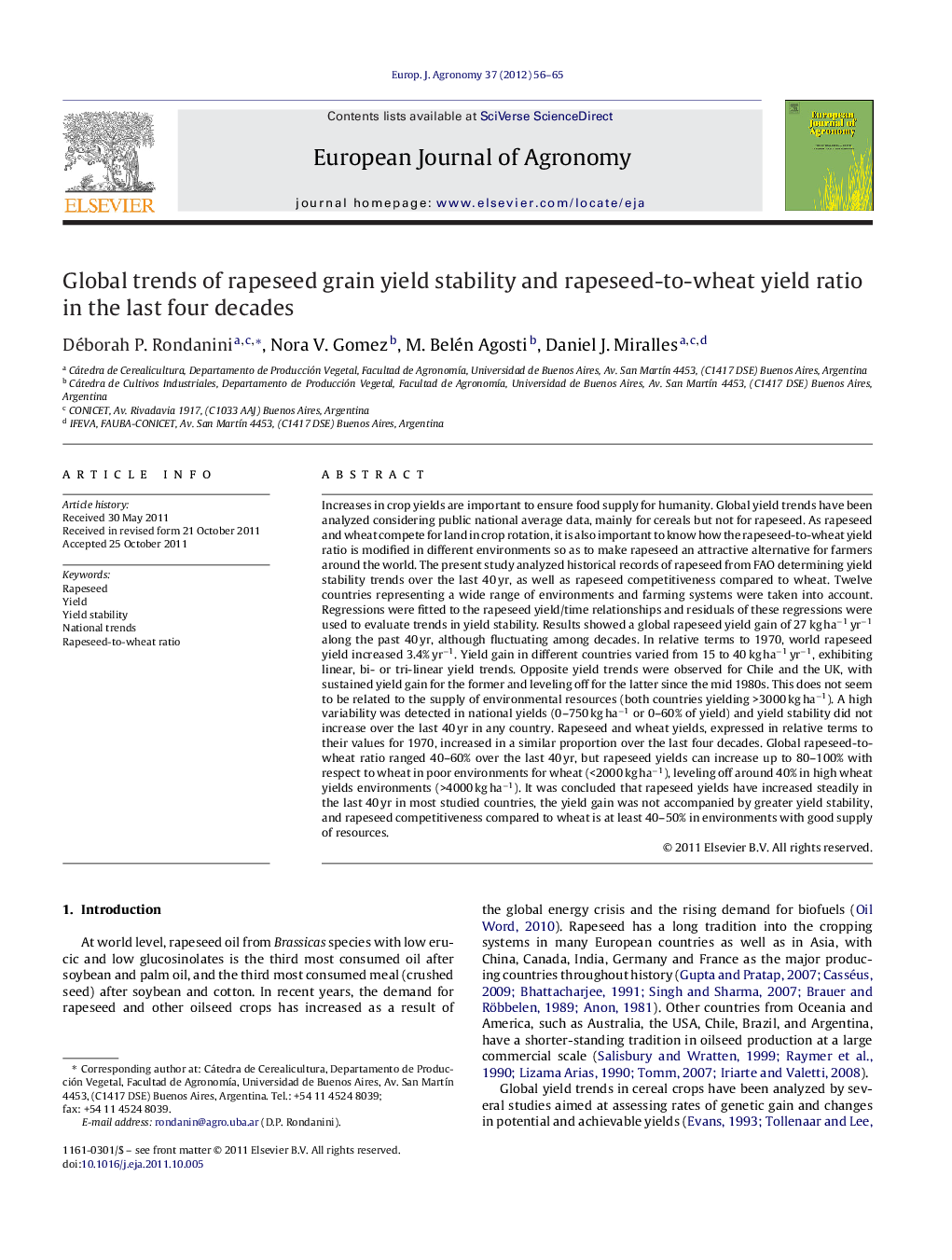| کد مقاله | کد نشریه | سال انتشار | مقاله انگلیسی | نسخه تمام متن |
|---|---|---|---|---|
| 4509184 | 1624489 | 2012 | 10 صفحه PDF | دانلود رایگان |

Increases in crop yields are important to ensure food supply for humanity. Global yield trends have been analyzed considering public national average data, mainly for cereals but not for rapeseed. As rapeseed and wheat compete for land in crop rotation, it is also important to know how the rapeseed-to-wheat yield ratio is modified in different environments so as to make rapeseed an attractive alternative for farmers around the world. The present study analyzed historical records of rapeseed from FAO determining yield stability trends over the last 40 yr, as well as rapeseed competitiveness compared to wheat. Twelve countries representing a wide range of environments and farming systems were taken into account. Regressions were fitted to the rapeseed yield/time relationships and residuals of these regressions were used to evaluate trends in yield stability. Results showed a global rapeseed yield gain of 27 kg ha−1 yr−1 along the past 40 yr, although fluctuating among decades. In relative terms to 1970, world rapeseed yield increased 3.4% yr−1. Yield gain in different countries varied from 15 to 40 kg ha−1 yr−1, exhibiting linear, bi- or tri-linear yield trends. Opposite yield trends were observed for Chile and the UK, with sustained yield gain for the former and leveling off for the latter since the mid 1980s. This does not seem to be related to the supply of environmental resources (both countries yielding >3000 kg ha−1). A high variability was detected in national yields (0–750 kg ha−1 or 0–60% of yield) and yield stability did not increase over the last 40 yr in any country. Rapeseed and wheat yields, expressed in relative terms to their values for 1970, increased in a similar proportion over the last four decades. Global rapeseed-to-wheat ratio ranged 40–60% over the last 40 yr, but rapeseed yields can increase up to 80–100% with respect to wheat in poor environments for wheat (<2000 kg ha−1), leveling off around 40% in high wheat yields environments (>4000 kg ha−1). It was concluded that rapeseed yields have increased steadily in the last 40 yr in most studied countries, the yield gain was not accompanied by greater yield stability, and rapeseed competitiveness compared to wheat is at least 40–50% in environments with good supply of resources.
► Rapeseed yield over the last 40 yr was analyzed in 12 countries from FAO records.
► Yield gain (3.4% yr−1) was not accompanied by yield stability.
► Rapeseed yield was 40–50% of wheat yields reached in high yielding environments.
► In poor environments, rapeseed competitiveness ranged from 40 to 100% of wheat yield.
Journal: European Journal of Agronomy - Volume 37, Issue 1, February 2012, Pages 56–65